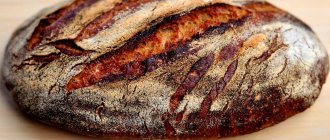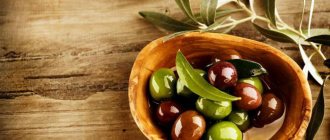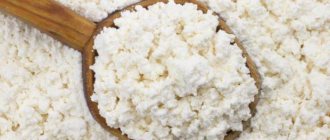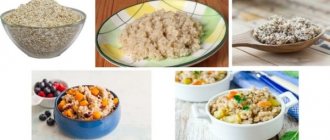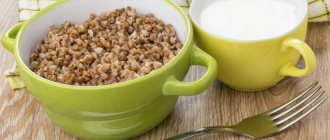Since childhood, everyone knows that porridge is a very healthy food product. However, today we want to talk about which porridge has the most protein. All cereals are a valuable source of vitamins and minerals, amino acids, and nutrients. Porridges have always been worthy of attention and even with the modern variety of products in supermarkets they have not lost their relevance.
Historical experience
We have centuries of experience in consuming cereal products. This is the oldest source of food that man decided to use. Even 17 thousand years ago, ancient civilizations began to eat barley. A little later they mastered oats, as well as millet. Then they didn’t choose which porridge had the most protein. What grew in the region was eaten. It was cereals that provided a well-fed and affordable diet for the poorest segments of the population, and supplied people with strength and energy.
Cereals were used in different ways. They were used to cook porridges and soups, and also ground them for baking flatbreads. Rich people did not refuse them either. In this case, porridges were used as side dishes for meat. Today we have access to a larger quantity of cereals than medieval inhabitants had in their diet. Which ones are the most valuable? The benefits to the body are usually calculated by the protein content. This is the most important building material for our tissues and organs. That’s why we decided today to find out which porridge has the most protein.
Oat groats
Today many people buy Hercules flakes. However, this flattened grain is already deprived of some of its beneficial properties. Therefore, if you consider yourself a follower of a healthy diet, then it is best to take whole oatmeal. Cooking it is not that difficult. But instant cereal is a refined product that will not give the body anything useful.
When talking about which porridge contains the most protein, one cannot help but remember oats. This cereal is one of the most ancient. In addition to protein, it contains microelements and vitamins, as well as an abundance of fiber. Calorie content is 355 kcal per 100 g of product. Grains contain insoluble fiber, which acts like a brush in the intestines. They clean the walls and remove cholesterol at the same time.
By regularly eating oatmeal, you will get rid of gastrointestinal diseases. It gives you a lot of energy, so you will be energetic all day. Cereals contain an enzyme that promotes the absorption of fat in the intestines. Oatmeal is distinguished by a large amount of biotin, which is actively involved in the metabolism of cholesterol, proteins and amino acids.
However, when eating oatmeal daily, you should remember that it contains phytic acid. It inhibits the absorption of calcium in the intestine, which can result in the development of osteoporosis.
Do you know how to cook delicious Hercules? Fill the flakes with water at the rate of 1/3 and put on fire. After 10 minutes, add cream to the pan and close the lid tightly. Before serving, add berries: raspberries, cherries or blackberries.
Plant protein in a vegan diet: where to get it and what to replace it with
Protein in a vegan diet
Not only those interested in the topic of ethical nutrition, but also people with other views on human nature are often interested in the question of where vegans get their protein.
This is precisely the question that is one of the arguments of opponents of eating without animal products, when they assume that it is impossible to obtain a sufficient dosage of protein in a daily diet on veganism. The inevitable deficiency of protein in a vegan diet, as well as its importance in human nutrition in general, is a big misconception. For those who are interested in what vegans replace protein with, they do not replace it, but get it fully in their daily diet, since plant foods are a good source of protein. Taking into account the recommended daily protein intake by the World Health Organization, a person needs to receive 0.8 g of protein per kilogram of weight every day. Given the difference between plant and animal protein—certain types of plant protein are processed in the gastrointestinal tract somewhat differently than animal protein—for people following a plant-based diet, it is advisable to increase the daily dose of protein to 1g per kilogram of weight.
An important factor in the correct calculation of the dosage of microelements is the percentage of protein and the total number of calories consumed by a person. A significantly lower level of calorie intake for a plant-based dieter is common in the absence of control over calorie intake to a certain standard. A sixty-kilogram vegan will consume 60 grams of plant protein per day, which is a larger percentage of his caloric intake than a meat eater who will consume the same amount of protein. Average statistical estimates suggest that the level of protein consumed by a meat eater is 10-13% of the total daily calorie intake, while vegetarians and vegans most often consume 14-18% protein. This means that the ratio of CBJU, which is one of the most important factors in balanced and proper nutrition, is normal among those who adhere to abstaining from animal products (ASF).
Most often, in the absence of strict control of BPJU, a meat-eating person tends to go over the recommended daily protein intake, especially if he is fond of visiting fast food restaurants and ready-made foods. The danger of too much protein should not be underestimated: it fuels the development of many diseases. Animal protein, not to mention too much of it, tends to provoke the development of cancer cells, obesity, problems with the cardiovascular system and other serious abnormalities.
Therefore, obtaining vegan protein is not at all difficult. For greater specificity, we will combine sources containing essential amino acids and proteins of plant origin into the list of products. So where is the most plant-based protein?
Seitan
Seitan is one of the most common protein sources for vegans.
The product is made from gluten, the main type of protein in wheat. Many note its similarity to meat in appearance and consistency of the product. 100g of pure seitan without additives contains 25g of protein, making it one of the richest sources of protein.
Seitan is not very easy to find on Russian store shelves, but it is very common abroad. You can only buy it in specialized plant food stores. But seitan is quite easy to prepare at home, because there are many different variations of its preparation online. Seitan is consumed fried in a pan or grilled, as well as boiled, so it can be used in countless dishes. Contraindicated for people with celiac disease.
Tofu, tempe and edamame
These products are soy derivatives. Soybeans are a complete source of protein that saturates the body with the amino acids it needs.
Edamame is an unripe soybean with a sweet and slightly grassy flavor. They can be cooked in a double boiler or boiled to serve as an independent side dish or added to hot and main courses.
Tofu, or “vegan cheese” as it is often called, is made from pressed minced beans using a technology similar to making cheese. Recently, it can be found not only in specialized stores, but also in almost every hypermarket throughout Russia. It costs no more than cheese, and is served in many variations with different additives, such as herbs, spices or even fruits.
Tempe soy product is made by boiling and pressing ripe soybeans. It has a slightly nutty flavor and contains an impressive amount of probiotics and vitamins.
These soy products contain 10-19 grams of protein, depending on preparation, for every 100 grams of product.
Lentils
All varieties of lentils (red, green, brown) contain 25g of plant-based protein. It is one of the record holders in protein value. Of course, you need to take into account its quantity in dry form.
Chickpeas and most legumes
As a rule, all legumes are famous for their high protein content. For example, popular chickpea beans (most often eaten with minced meat - falafel) contain 19 grams of protein per 100 grams of product.
The beneficial properties of legumes can be listed for a long time: they are valuable sources of long-digesting complex carbohydrates, fiber, iron, folic acid, and a diet whose main product is legumes helps control cholesterol and blood sugar, regulate blood pressure in hypertension and help normalize weight in obesity .
Spirulina
Just two scoops (14g) of nutritious spirulina algae will provide you with 8 grams of pure protein, plus 22% of your daily iron and thiamine needs. Spirulina has a lot of unique medicinal properties.
Spirulina in its various forms can be purchased in specialized stores and some hypermarkets at a price that will seem too low to you compared to the storehouse of useful microelements and properties that you will receive. Most often, spirulina is produced in dried form. You can order it in almost every online health food store.
Amaranth and quinoa
Nutritious cereals, which are completely gluten-free, contain 14 g of protein per hundred grams of product. They are prepared as individual dishes or ground into flour for use in cooking.
Crispbreads and bread products made from sprouted grains
Any bread products made from natural sprouted grains or legumes contain approximately 8 g of protein per serving of product, equal to two slices of regular bread (which has several times less protein).
In addition, sprouted grains and legumes increase their nutritional properties and the number of amino acids, and reduce the amount of anti-nutrients. The amino acid lysine, which opens during germination, helps improve the quality of the resulting protein. And the combination of grains and legumes in the preparation of bread will improve the quality of bread to the limit.
Plant milk
Soy, almond, coconut and other plant milks contain approximately 3-4 grams of protein. Accordingly, drinking an average glass of this milk (250 milliliters) will provide you with approximately 9 grams of protein.
All pasteurized plant milks are pre-fortified with additional calcium and essential vitamin B12.
Nuts and products made from them (peanut butter, peanut butter, etc.)
Nuts and vegan protein-rich products made from them are another great source of protein.
100g of each type of nut contains about 20g of protein. They also contain a treasure trove of fiber, healthy fats and a variety of vitamins.
When purchasing nuts, you should keep in mind that roasting and heat treatment can reduce their nutritional value and the amount of useful substances. To get the most benefit from your nuts, consume them pre-soaked (two to twelve hours, depending on the nut).
When choosing nut butters and pastes, give preference to products that are as simple in composition as possible and do not contain excess oil, sugar and salt. This way the protein and other micronutrients contained in them are absorbed best.
Table of protein content in nuts, dried fruits and seeds
| Dried fruits, nuts, seeds | Name | Proteins per 100 gr. product |
| Dried apricots | 4.8 gr. | |
| Prunes | 2.3 gr. | |
| Dates | 2.5 gr. | |
| Raisin | 1.8 g | |
| Dried figs | 3.1 gr. | |
| Dried apple | 3.2 gr. | |
| Dried apricots | 5.1 gr. | |
| Peanut | 26.3 gr. | |
| Walnut | 16.2 gr. | |
| Pine nut | 11.6 gr. | |
| Cashew | 17.5 gr. | |
| Almond | 21.2 gr. | |
| Pistachios | 20.1 gr. | |
| Hazelnut | 16.1 gr. | |
| Sunflower seeds | 23.1 gr. | |
| Pumpkin seeds | 24.5 gr. | |
| Hemp seeds | 35.3 gr. | |
| Chia seeds | 16.6 gr. | |
| Sesame seeds | 18.4 gr. | |
| Flax seeds | 18.1 g |
Protein-rich fresh vegetables and fruits
Vegetables and fruits, which often make up the majority of the diet of plant-based dieters, are usually underestimated in their benefits. Yes, the amount of protein in vegetables and fruits is usually small, but some of them contain enough.
Where to get protein for vegans: fruit and vegetable products.
Table of protein content in vegetables and mushrooms
| Vegetables, mushrooms | Titles | Proteins in 100 gr. product |
| Potato | 2 gr. | |
| Beet | 2.5 gr. | |
| Cauliflower | 2.5 gr. | |
| Garlic | 6.5 gr. | |
| White cabbage | 1.8 gr. | |
| Eggplant | 1.2 gr. | |
| Zucchini | 1.2 gr. | |
| Carrot | 1.4 gr. | |
| Pepper | 1.3 gr. | |
| Radish | 1.9 g | |
| Asparagus | 2.2 gr. | |
| Artichoke | 1.2 gr. | |
| Corn | 3.3 gr. | |
| Green pea | 5.4 gr. | |
| Chilli | 2 gr. | |
| Pumpkin | 1 gr. | |
| White onion | 1.4 gr. | |
| Broccoli | 2.8 gr. | |
| Tomatoes | 1.1 gr. | |
| cucumbers | 0.8 gr. | |
| Porcini mushrooms | 3.7 gr. | |
| Champignon | 4.3 gr. |
Fresh fruits are somewhat inferior to vegetables in terms of protein amino acid content. Together with the microelements in their composition, they bring undeniable benefits.
Table of protein content in fruits
| Fruits | Name | Proteins in 100 gr. product |
| Apricot | 1.4 gr. | |
| A pineapple | 0.5 gr. | |
| Orange | 0.9 gr. | |
| Watermelon | 0.6 gr. | |
| Banana | 3.9 gr. | |
| Grape | 0.6 gr. | |
| Cherry | 1.1 gr. | |
| Pomegranate | 0.9 gr. | |
| Grapefruit | 0.7 gr. | |
| Pear | 0.5 gr. | |
| Melon | 0.8 gr. | |
| Figs | 0.7 gr. | |
| Kiwi | 0.8 gr. | |
| Coconut | 3.3 gr. | |
| Lemon | 0.9 gr. | |
| Mango | 0.5 gr. | |
| Mandarin | 0.6 gr. | |
| Apple | 0.3 gr. | |
| Pomelo | 0.8 gr. | |
| Papaya | 0.6 gr. | |
| Peach | 0.9 gr. | |
| Plum | 0.7 gr. | |
| Cherries | 1.1 gr. |
Although nuts are one of the leading plant foods in terms of protein content, some plants also contain decent amounts.
Here are 18 healthy leafy greens that contain enough protein.
Table of protein content in greens
| Greenery | Name | Proteins in 100 gr. product |
| Basil | 3.2 gr. | |
| Green onions | 1.1 gr. | |
| Ivan-tea angustifolia | 4.7 gr. | |
| Keil | 4.3 gr. | |
| Cilantro | 2.1 gr. | |
| Watercress | 2.6 gr. | |
| Leaf lettuce | 1.5 gr. | |
| Dandelion leaves | 2.7 gr. | |
| Chard | 1.8 gr. | |
| White pigweed | 4.2 gr. | |
| Mint | 3.7 gr. | |
| Oregano | 9.9 gr. | |
| Parsley | 3.7 gr. | |
| Romano | 1.5 gr. | |
| Arugula | 2.6 gr. | |
| Dill | 2.5 gr. | |
| Spinach | 2.9 gr. | |
| Sorrel | 1.5 gr. |
Contrary to myths, protein deficiency in plant-based diets is not common. One of the main rules for any diet, plant-based or with ALP, is to control the ratio of nutrients to maintain optimal balance.
Tags: plant-based protein nutrition plant protein
Posted by Vegan Ray October 25, 2021
Buckwheat
If we talk about which porridge has the most protein, then buckwheat immediately comes to mind. Tasty, crumbly, satisfying, it is a favorite side dish for many. This may be a discovery for you, but buckwheat is not a cereal, like most cereals. This is a herbaceous plant, the closest relative of which is sorrel. The calorie content of this product is minimal, but the benefits the body receives are simply colossal. There are only 320 kcal per 100 g.
This is the incomparable leader among cereals in terms of nutritional value. A large number of diets are based on its use. Most often, when deciding to lose weight, people begin to pay close attention to the protein in their food. The table will help you create an optimal diet that will enable you to achieve your ideal.
Buckwheat is suitable not only for those who watch their figure. This is the optimal animal protein substitute for vegetarians. A tasty and healthy product allows you to build a healthy diet. In buckwheat, the volume of vegetable protein reaches 18%. This is a very good indicator. In addition, it is rich in potassium and magnesium.
People call this cereal a mini-pharmacy. You can talk about her alone endlessly. But it is especially often interested in those for whom protein in food is important (the table provides a comparative description so that you can see how its content differs in different cereals).
Among other things, buckwheat saves the body from intoxication and poisoning. It removes toxins and reduces the risk of cardiovascular diseases. The list can go on and on, buckwheat helps with metabolic disorders and obesity, as well as vitamin deficiency. This is not surprising because it is rich in B vitamins, phosphorus, calcium, manganese and potassium, iron and magnesium.
It’s very easy to cook delicious buckwheat in pots. To do this, pour cereal into it and pour boiling water over it. Place the pot in the oven for 15 minutes. Now open the lid and place butter in the middle and return to the oven for a few minutes. The resulting dish looks like it came out of a Russian oven.
If we talk about which porridge has the most protein, the list often starts with buckwheat. But is this really so, let's look further.
Daily protein intake
Calculating your daily protein intake is easy. With a proper diet, the indicator should be within 35% of the daily calorie intake. For women weighing 65 kg with a subcutaneous fat level of 18%, it is necessary to consume 110 g of protein daily. For men weighing 80 kg and subcutaneous fat level 12% - 170 g. The amount of polypeptide consumed depends on physical activity during the day. With sports nutrition and a low-carb diet, there is no need to exceed the daily protein intake. Research by scientists has proven that when the norm is significantly exceeded, the level of its absorption decreases.
Pearl barley
She has been undeservedly forgotten today. Only in the canteens they still prepare pickles and a side dish of barley. Many people consider it tasteless, but in fact they simply do not know how to cook it properly. It is a product of grinding barley, which formed the basis of the diet of the ancient Romans. The gladiators ate this porridge with pleasure, as it quickly replenished energy costs. It was popular in Rus' until it was replaced by wheat. If we consider healthy foods that contain a lot of protein (the table will make it possible to imagine this more clearly), then pearl barley will take place after buckwheat, with a small margin. Calorie content - 325 kcal per 100 g.
It must be prepared correctly. Pre-soak the cereal overnight, then rinse and fill 1/5 with water. Boil the pearl barley for about an hour, and then leave to simmer over low heat for 5-6 hours.
Millet cereal
This is real sunshine in a plate. It’s a pity that millet is eaten quite rarely today. This cereal undergoes minimal processing, and all its beneficial properties are preserved. Millet is superior to buckwheat in protein content, and in addition, it is rich in carbohydrates. For this reason, millet porridge should not be consumed by people with diabetes. But a healthy person receives a boost of energy, a long-lasting feeling of satiety, and a good dose of protein and vitamins. Millet contains healthy fats that increase the nutritional value and calorie content of porridge (334 kcal per 100 g).
Sources of protein for the body
Polypeptides are one of the main components necessary for the proper metabolic process in the body. As you know, fats, proteins and carbohydrates are involved in daily metabolism. Their balanced ratio provides the required amount of calories, which are the main source of energy for the human body. The main source of proteins for humans is poultry, pigs, and cows. Meat consists of 18–35% protein. Covers the daily human need for polypeptides. There are a number of representatives of the vegetarian group who do not eat meat. Where is the source of protein for such people? Other foods are also rich in proteins. Up to 13% of them contain buckwheat, up to 55% soy.
Disadvantage: soy contains isoflavones, which are dangerous for men due to their ability to increase estrogen levels; the protein contained in buckwheat is absorbed by half.
Proteins (or proteins) are an essential component of nutrition, without which the process of healthy metabolism is impossible.
Corn grits
It can be placed on our list after pearl barley. Despite the fact that this product is unusual and unusual in our country, it must be consumed. Boiled corn is a seasonal dish, and cereals are available in stores all year round.
It is very filling, you simply won’t be able to eat too much of it. The absorption period is long. Within 4 hours, the body will break down carbohydrates and gradually waste them. This unique property makes cereal a real find for people who care about their figure. In addition to a good portion of protein, it also contains potassium and magnesium. These microelements are very valuable for the heart. A large amount of vitamins makes this porridge an excellent helper for the body in the off-season. Calorie content - 337 kcal per 100 g.
And we finish looking at foods with the highest protein content. The cereals listed in this article are very healthy and should be consumed every day. Then the body will last much longer. There is one more cereal left that needs attention.
List of Protein Rich Foods
10 foods with the highest protein content
- Poultry meat – from 17 to 22 grams (per 100 grams of product)
- Meat – from 15 to 20 grams
- Fish - from 14 to 20 grams
- Seafood – from 15 to 18 grams
- Legumes – from 20 to 25 grams
- Nuts – from 15 to 30 grams.
- Eggs – 12 grams
- Hard cheese – from 25 to 27 grams
- Cottage cheese – from 14 to 18 grams
- Cereals – from 8 to 12 grams
Meat protein table
| Food product | Protein (grams) |
| Chicken | 20,8 |
| Turkey | 21,6 |
| Beef | 18,9 |
| Pork | 11,4-16,4 |
| Mutton | 16,3 |
| Boiled sausage | 10,1-13,7 |
| Smoked sausage | 16,2-28,2 |
Fish and seafood proteins
| Food product | Protein (grams) |
| Squid | 18,0 |
| Crab | 16,0 |
| Shrimps | 18,0 |
| Mackerel | 18,0 |
| Flounder | 16,1 |
| Pink salmon | 21,0 |
| capelin | 13,4 |
| Herring | 17,7 |
| Zander | 19,0 |
| Cod | 17,5 |
| Sturgeon | 16,4 |
| Bream | 17,1 |
| Pollock | 15,9 |
| Salmon | 20,8 |
| Canned fish in oil | 17,4-20,7 |
| Canned fish in tomato | 12,8-19,7 |
| Canned fish in its own juice | 20,9-28,7 |
Milk proteins
| Food product | Protein (grams) |
| Milk | 2,8 |
| Kefir | 2,8-3,0 |
| Sour cream | 2,8-3,0 |
| Yogurt | 5,0 |
| Cream | 2,8-3,0 |
| Cheese | 23,4-26,8 |
| Cottage cheese | 14,0-18,0 |
Cereals
| Food product | Protein (grams) |
| Oatmeal | 11,0 |
| Buckwheat | 10,8 |
| Rice | 7,0 |
| Millet | 11,5 |
| Pearl barley | 9,3 |
| Manna | 11,3 |
| Hercules | 13,1 |
The data given in the tables are absolute values, but the percentage of protein absorption by the body does not reach one hundred percent for everyone.
Protein Digestibility Chart
| Protein source | Digestibility coefficient |
| Milk | 100% |
| Supro isolated soy protein | 100% |
| Beef | 92% |
| Fish | 92% |
| Other isolated soy protein | 92% |
| Mechanically separated poultry meat | 70% |
| Canned beans | 68% |
| Oats | 57% |
| Rice | 54% |
| Peanut | 42% |
| Corn | 42% |
| Wheat gluten | 27% |
To find how much protein enters the body, add 50% to the above calculation, which will be 90 grams, that is, 65x1 + 50%.
